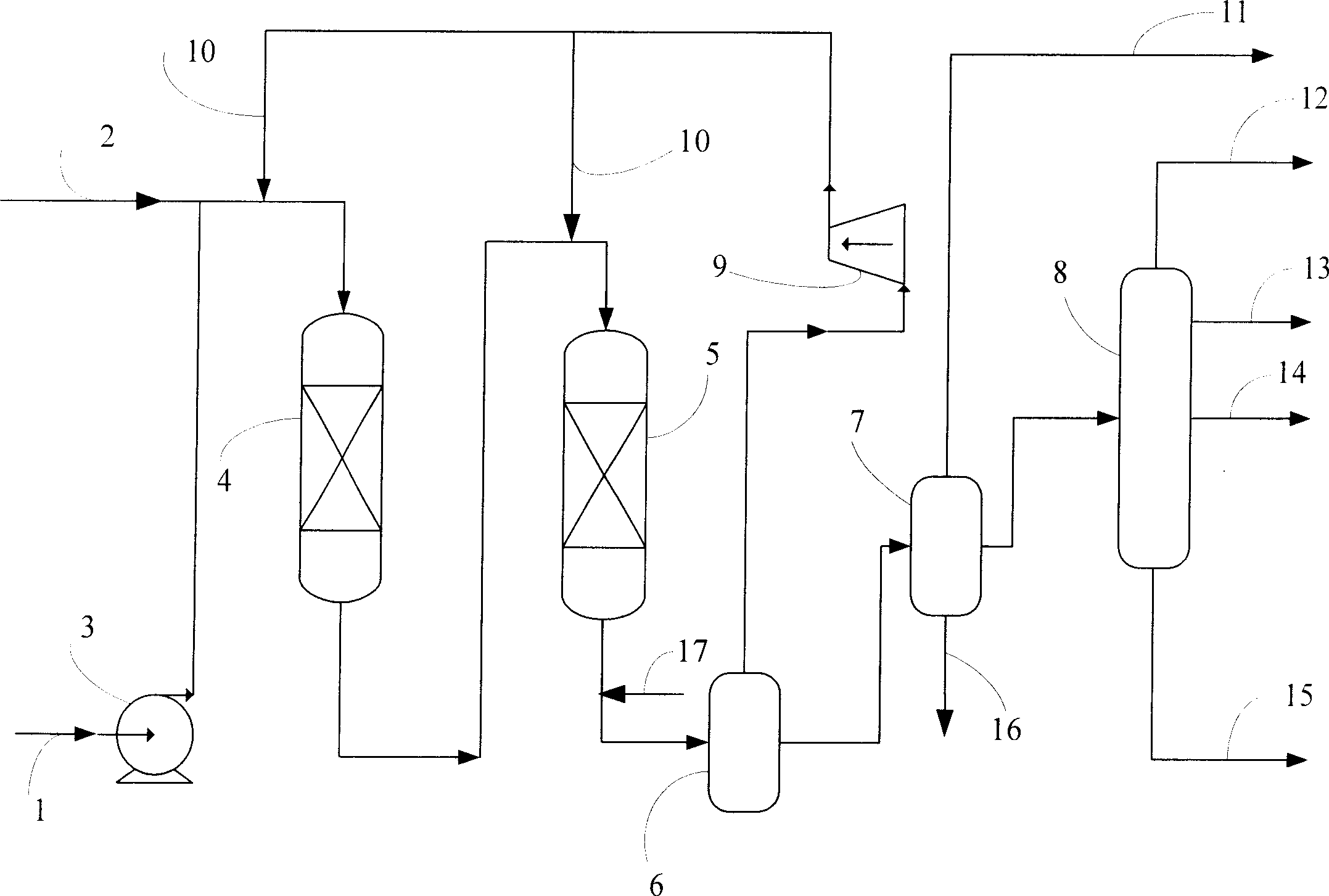Hydrogenation cracking method to produce more raw material for making ethylene
A technology of hydrocracking and ethylene production, which is applied in the cracking field of hydrocarbon oil, which can solve the problem of low yield of tail oil and achieve the effect of low BMCI value
- Summary
- Abstract
- Description
- Claims
- Application Information
AI Technical Summary
Problems solved by technology
Method used
Image
Examples
preparation example Construction
[0018] The preparation method of the hydrorefining catalyst is as follows: after uniformly mixing aluminum oxide, silicon oxide and a salt solution containing fluorine and / or phosphorus in required proportions, extruding, drying and roasting to make a carrier. Mix the salt solution of metal tungsten, molybdenum and nickel with a specific complexing solution according to a certain ratio, add the carrier into the mixed solution, soak for a certain period of time, then filter off the remaining solution, and obtain the finished catalyst after drying and activation .
[0019] The denitrification activity of the preferred hydrorefining catalyst is about 30% higher than that of the current advanced hydrodenitrification catalyst, or the reaction temperature can be lowered by 8-12°C when the same denitrification rate is achieved.
[0020] In order to ensure the long-term operation of the industrial device, a protective agent is loaded on the top of the hydrorefining catalyst. The prote...
Embodiment 1
[0040] Using VGO with nitrogen content as high as 2300μg / g as raw material A, a comparative test of denitrification activity of hydrofining catalyst was carried out. The denitrification effects of the refined catalyst D with high denitrification activity of the present invention and the comparative hydrotreating catalyst N are listed in Table 2.
[0041] As can be seen from Table 2: under the same reaction conditions, compared with the comparison hydrofinishing catalyst N, the refined oil nitrogen content of the hydrofinishing catalyst D of the present invention is significantly reduced, and the other reaction conditions are the same, and the reaction temperature is 360 ° C The relative hydrodenitrogenation activity of Refined Catalyst D is 26% and 27% higher than that of Comparative Hydrofinished Catalyst N at 380°C and 380°C respectively.
Embodiment 2
[0043] A VGO is used as the raw material B, the raw material oil and hydrogen enter the hydrotreating reactor, and react under the action of the hydrofining catalyst, and the reaction effluent enters the hydrocracking reactor without separation, and acts on the hydrocracking catalyst E The reaction is carried out under the following conditions, and the generated reaction effluent is cooled, separated and fractionated to obtain naphtha, diesel oil and tail oil. The test results are shown in Table 3. It can be seen from the data in Table 3 that when the preferred hydrocracking catalyst E of the present invention is used, the BMCI value of the tail oil is as low as 11.0.
PUM
 Login to View More
Login to View More Abstract
Description
Claims
Application Information
 Login to View More
Login to View More - R&D
- Intellectual Property
- Life Sciences
- Materials
- Tech Scout
- Unparalleled Data Quality
- Higher Quality Content
- 60% Fewer Hallucinations
Browse by: Latest US Patents, China's latest patents, Technical Efficacy Thesaurus, Application Domain, Technology Topic, Popular Technical Reports.
© 2025 PatSnap. All rights reserved.Legal|Privacy policy|Modern Slavery Act Transparency Statement|Sitemap|About US| Contact US: help@patsnap.com

